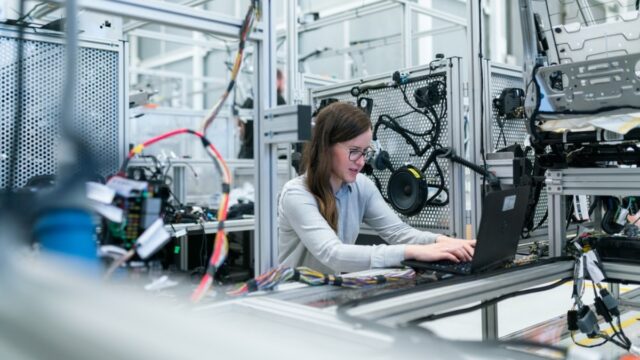The average American spends more than six hours each day in their workplace. This is such a long time, and many things may happen during this period. Contrary to common belief, most workplaces are not safe.
The threats vary in form and intensity based on your occupation and rank at your workplace. Common accidents in workplaces may include slip and fall, accidents due to defective machinery, and even accidents resulting from mishandled machinery.
Some workplace accidents may leave you nursing severe injuries and may cost you a fortune to treat. Thankfully, the advancements in technology have brought about different strategies to promote workplace safety.
New Technologies That Make the Workplace Safer
Contents
1. Robotics
The role of robotics when it comes to workplace safety can never be overemphasized. They are particularly invaluable due to their multi-faceted functions ranging from packaging needs to safety purposes. When used correctly, robots significantly reduce the safety risks workers are prone to meet in the workplace.
Robots are often used to perform tasks that would otherwise be too dangerous for human beings to achieve. In many cases, they are also used for simulation in industries. Therefore, they can be used to do more strenuous work, such as all the heavy lifting. However, like all other machinery, robot operations should be done with proper caution to avoid injuries.
2. Wearable Technologies
Nothing makes safety easier than a gadget you can wear. Perhaps that is one of the factors that led to the embracing of wearable technology into various workplaces. Most wearable technology is light and efficient at the same time and does not get in your way when you use them.
What’s more, wearable technology can be used to reduce workplace accidents and injuries. They can also come in handy in sharing data among workmates and their employers. Wearable technologies take various forms, such as cooling vests, heat stress devices, and sensors. They can be helpful in scanning barcodes, enabling calls, and even tracking biometrics.
3. Training Software
One of the best safety measures you can incorporate in a workplace is the proper training of employees to deal with all the safety hazards, safely operate machinery, and other safety tips they may apply while on the job.
With the advanced technology, employers can now train their staff on using dangerous machinery without putting them in precarious positions. Virtual reality and simulation give the trainees an almost real experience while keeping them out of harm’s way.
4. Vehicle Gadgets
It is not uncommon to hear of car accidents involving company cars. Whether they crashed out of negligence or it was a purely accidental incident, a car accident can claim employees’ lives. Various vehicle improvements try to mitigate this and offer a safer environment to the drivers. Such technology includes dash cams, autonomous vehicles, and auto-stop features.
5. Workstation Improvements
A commonly overlooked aspect of the workplace is usually the workstation. Significantly few people recognize the adverse effects of low computers on their health. However, this should not be overlooked. The use of sit-stand workstations should be widely embraced in workplaces. The use of ergonomic devices and furniture should be normalized since they alleviate the stress and pain caused on the body.
What to Do when It All Fails to Work
There may be times when all the safety measures fail to work, and you get injured at the workplace. This can be a very frightening experience. However, you do not have to bear the losses that result from your injury alone. With the help of an excellent personal injury attorney, you can file for compensation for all the injuries you have sustained at work.


